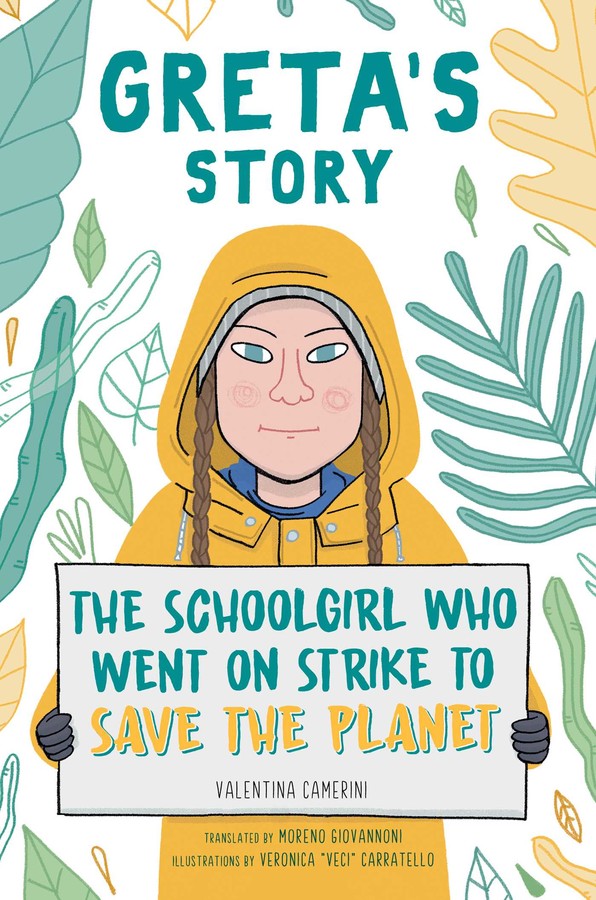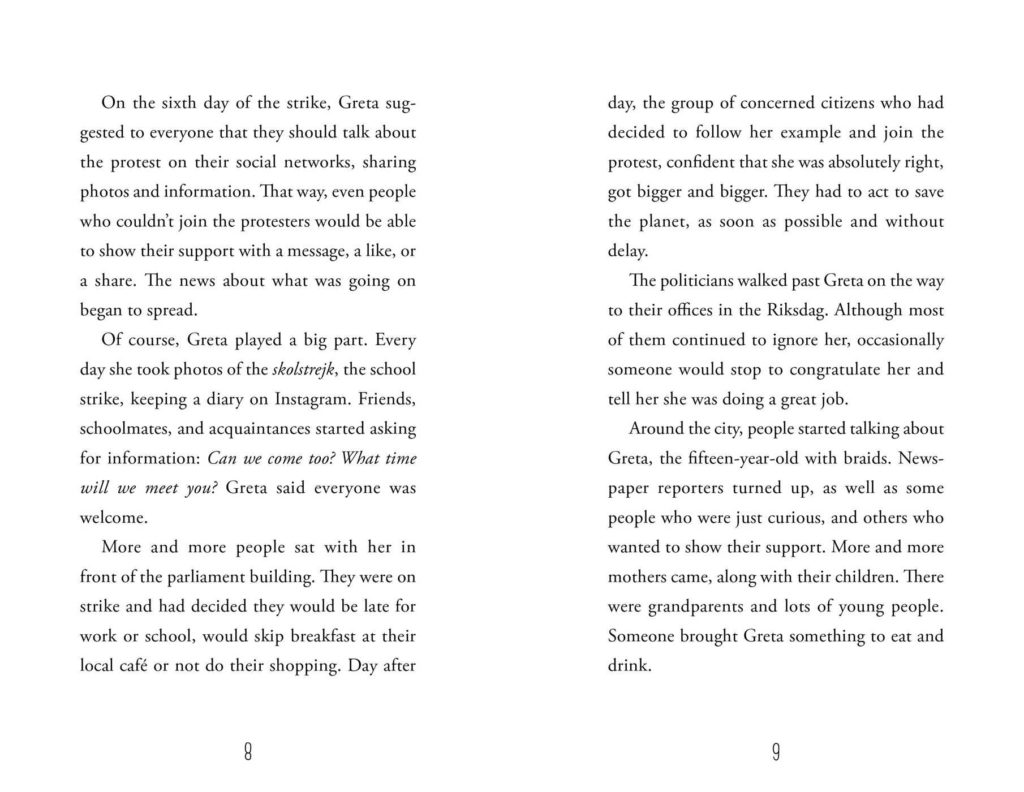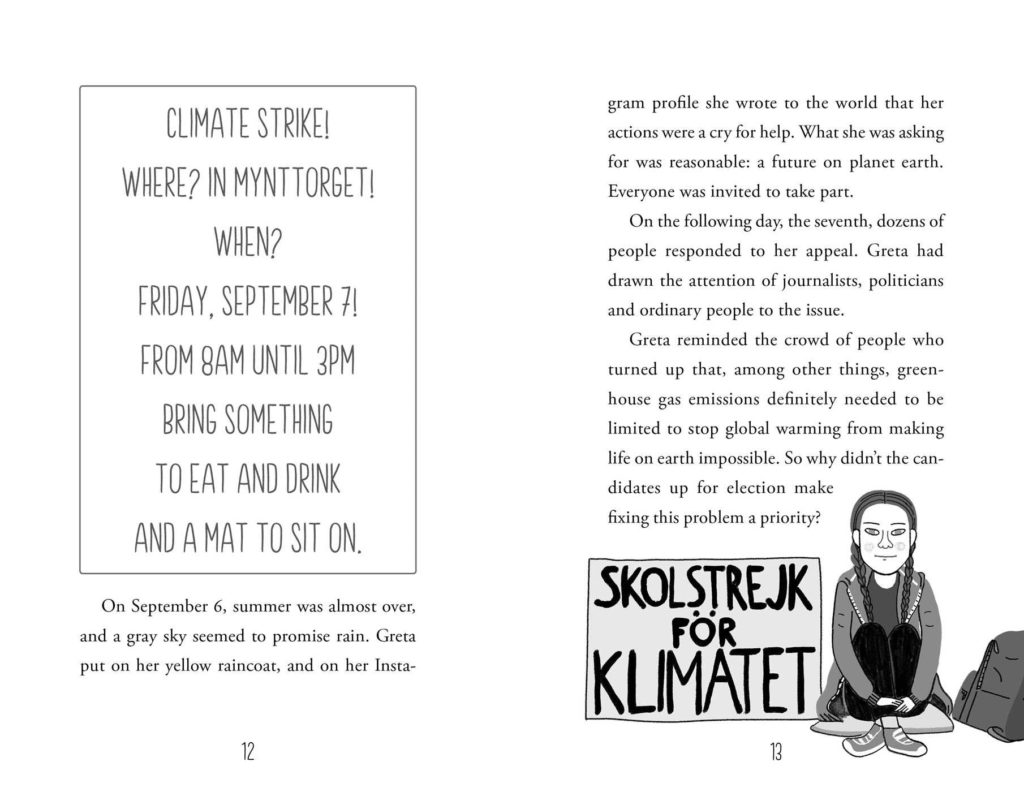Why isn’t she in school? I wondered to myself when Greta Thunberg first burst onto the scene. If your mid elementary aged child was wondering that; or possibly other things about the schoolgirl who went on strike, then this book is exactly what they’re looking for. Greta’s Story, The Schoolgirl Who Went on Strike to Save the Planet by Valentina Camerinia, translated by Moreno Giovannoni with illustrations by Veronica Carratello is a middle-elementary school book that gives ages 8-12 at this young eco-warrior.

Greta’s trademark look dons the cover of the book and its reading level is perfect for the midrange of that audience. The chapters in the book are a little long for those on the lower scale and have some vocabulary that will be challenging for them. For example, some of the chapters are 12 pages long and multiple environmental terms are used. There is a glossary in the back which will benefit those high level second or third graders.

Greta’s Story starts with her family and really gets into gear when talking about her. She’s very shy, once went weeks without speaking and started to come out of her shell once she started caring about the environment. The later instance was much to the relief of her parents, who were at their wit’s end trying to figure out what was going on.
For some readers, it’s her parents who will come off gleaning the most insight into. How they raised her, shuffled their careers around and finally evolved their thinking, habits and beliefs when she became a teenager. The book gets a little procedural in the middle when various climate meetings are happening and she’s going from place to place. However, for young environmentalists or those curious about Greta this is a good jumping off point.

The downside to writing a book like this is that it’s immediately dated, some facts have changed and older readers will be aware of the selective omission happening in the book. However, being a responsible steward of the Earth is serious business and that starts with questions. If Greta’s Story gets young people interested in actually making a positive difference then that’s a good thing.




 Facebook
Facebook Twitter
Twitter Flickr
Flickr GooglePlus
GooglePlus Youtube
Youtube